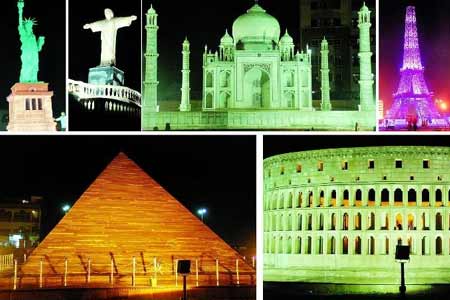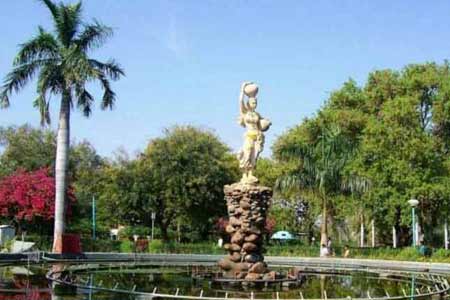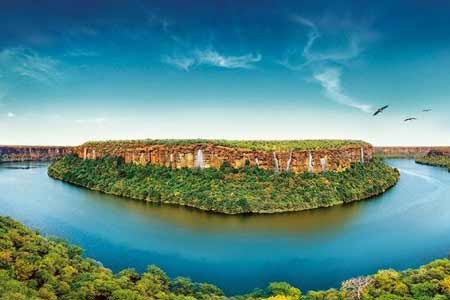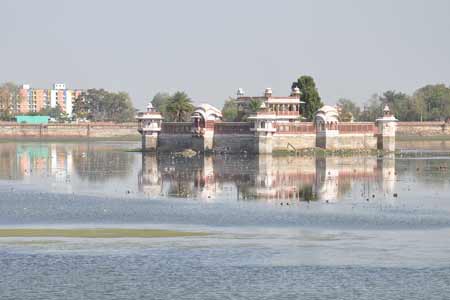
Garh Palace Kota
The Garh Palace, situated in Kota, Rajasthan, comprises of a number of architectural structures in a single complex. It is also called the city palace and has a number of apartments, monuments etc, which were built at a different period of time by different, rules, and showcases Rajput heritage along with Mughal art.
The palace is adorned with imposing wall paintings, mirror walls, mirror ceilings, hanging illuminated lights and floral decorations. Breathtaking marble floorings and walls and stylish fashioned entrance, all these make City Palace a memorable location. There are beautiful gardens around the palace, which make it seem more beautiful.
City Palace encloses a grand museum enclosing huge collection of medieval weaponries, costumes and apparels of erstwhile kings and queens, artifacts and handicrafts showing the cultural heritage of the bygone splendid days. The Museum has been open to the public since 1970.
History
It is believed that the foundations of the Garh Palace were first laid in the year 1264 by Prince Jait Singh of Bundi on the spot where he sacrificed and buried the severed head of the defeated Bhil Chieftain Koteya who had previously ruled the region. The name ‘Kotah' is often said to memorialize the human sacrifice (nar bali) of Koteya, although it may equally reference the presence of a strong fort, or kot.
Architecture of Kota Fort and City Palace :
Its design is a fine blend of the Rajasthani and the Mughal style of architecture and art. It has huge rampart walls with massive bastions, 6 double gates and 25 towers. The main entry gate named Naya Darwaza is located towards South. It encloses numerous palaces named Madho Singh Mahal, Raj Mahal which is intricately painted and is adorned with excellent mirror work, Bada Mahal, Chhatra Mahal and the ruined Jhala Haveli. It is famous for its Durbar Hall which is ornamented with beautiful wall paintings, mirror work, hanging illuminated lights and floral decorations and has doors of ebony and ivory. The exquisite miniature paintings of the Kota school are also housed within the Durbar Hall. It also houses a grand Museum on the right side of its central courtyard, displaying a huge collection of medieval weapons, costumes and apparels of the erstwhile rulers, artifacts and handicrafts.
Kota Tourist Attractions
Kota is the third largest city in the state of Rajasthan and is one of the popular tourist destinations. Situated on the banks of the Chambal River, the city of Kota is famous for its distinctive style of paintings, palaces, museums, and places of worship. The city is known for gold jewellery, Doria sarees, silk sarees and the famous Kota stone. The history of Kota dates back to the 12th century when Rao Deva conquered the territory and founded Hadoti. The independent Rajput state of Kota was carved out of Bundi in 1631. The kingdom of Kota had a turbulent history as it was raided by various Mughal rulers, Maharajas of Jaipur and even the Maratha warlords. The city of Kota is well known all over the world for its architectural splendour comprising beautiful palaces, temples and museums which exhibit the grandeur of the foregone era. Kota is the third largest city in the state of Rajasthan and is one of the popular tourist destinations. Situated on the banks of the Chambal River, the city of Kota is famous for its distinctive style of paintings, palaces, museums, and places of worship.
 +91 9549279999
+91 9549279999 








